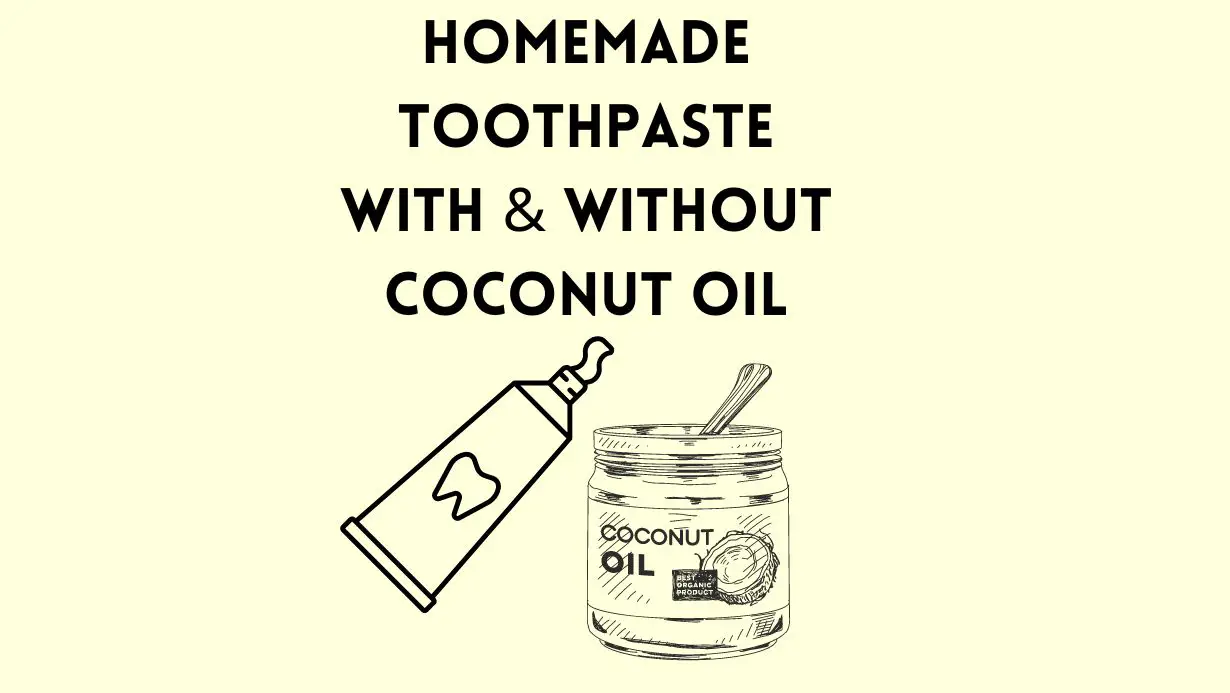
We all know that coconut oil is good for us. It’s a “superfood” with a host of benefits, including being good for our skin, hair, and teeth. Coconut oil has even been used as a natural toothpaste! But what if you don’t want to use coconut oil in your toothpaste? Maybe you’re allergic to it, or you just don’t like the taste. Whatever the reason, we’ve got you covered with this recipe for homemade toothpaste without coconut oil.
What You’ll Need
-1/4 cup baking soda
-1/4 cup water
-2 tablespoons hydrogen peroxide
-1 teaspoon salt
-1 tablespoon xylitol (optional)
-20 drops essential oil (optional)
The Recipe
There are a few recipes for homemade toothpaste without coconut oil, but they all have similar ingredients. You’ll need:
-Baking soda
-Water
-Glycerin (optional)
-Essential oils (optional)
To make the toothpaste, simply mix together the baking soda and water until you have a paste. If you’re using glycerin, add it in now. Then, add a few drops of your chosen essential oil and mix everything together well. Store the toothpaste in a sealed container and use as you would any other toothpaste.
How to Use It
To use this homemade toothpaste without coconut oil, simply wet your toothbrush and dip it into the paste. Gently brush your teeth in a circular motion for two minutes, then spit the paste out into the sink and rinse your mouth with water. You can use this toothpaste once or twice a day, depending on your needs.
Benefits of This Toothpaste
When it comes to brushing your teeth, there are many benefits to using this homemade toothpaste without coconut oil. For starters, it is much cheaper to make your own toothpaste than it is to buy commercial brands at the store. Plus, this recipe uses all-natural ingredients that are gentle on your teeth and gums.
Another benefit of using this toothpaste is that it helps to whiten your teeth over time. This is due to the baking soda in the recipe, which acts as a natural abrasive. Additionally, the lemon juice in the recipe helps to remove any unwanted blemishes or discoloration on your teeth.
Finally, this toothpaste is beneficial because it contains no fluoride. Fluoride has been linked with a number of health concerns, so avoiding it is always a good idea. This homemade toothpaste recipe is a great way to do just that!
Variations
There are a few variations you can make to this homemade toothpaste recipe.
If you don’t have baking soda, you can use 1 teaspoon of salt instead. Just be sure to dissolve the salt in a little bit of water before adding it to the rest of the ingredients.
If you want to add a little bit of sweetness to your toothpaste, you can add 1-2 teaspoons of honey.
For a minty flavor, add 1/4 teaspoon of peppermint extract or 10 drops of peppermint essential oil. You could also use anise extract or fennel extract for a different flavor.
If you want to whiten your teeth naturally, you can add 2 teaspoons of hydrogen peroxide to the recipe.
What Is The Best Homemade Toothpaste?
There are many recipes for homemade toothpaste that don’t include coconut oil. You can find recipes online or in natural living cookbooks.
When it comes to choosing the best recipe, it’s important to consider what ingredients you’re looking for. For example, some people prefer a toothpaste with baking soda for its whitening properties, while others prefer a more gentle recipe with fewer abrasive ingredients.
Here are a few things to keep in mind when choosing a recipe:
– What is your goal for using homemade toothpaste? Are you looking to save money, avoid chemicals, or both?
– What kind of taste do you prefer? Minty? Fruity? Spicy? Sweet?
– Do you have any allergies or sensitivities that need to be considered?
– How much time do you want to spend making the toothpaste? Some recipes are very simple and only require a few minutes, while others are more involved.
To make your own toothpaste at home, start by mixing 1 teaspoon of baking soda with 2 tablespoons of water. Stir until the baking soda has dissolved completely. Then, add 1 tablespoon of hydrogen peroxide to the mixture and stir again. Finally, add 1 more tablespoon of water and mix everything together until you have a smooth paste.
If you want to add a little flavor to your toothpaste, you can try adding a few drops of essential oils like peppermint or lavender. You can also add a small amount of xylitol for sweetness. Just be sure not to add too much xylitol, as it can be toxic in large amounts.
Once you’ve mixed all of the ingredients together, transfer the paste into a small glass jar or container with a lid and store it in your bathroom for up to 2 weeks. To use, simply wet your toothbrush and dip it into the paste. brush your teeth as usual and rinse well with water.
What Does Coconut Oil Do In Toothpaste?
Coconut oil has many benefits for the skin, hair, and nails. But what does it do in toothpaste?
Coconut oil is a natural antibacterial and antifungal agent. It can help to fight off bacteria that cause cavities, gum disease, and bad breath. Coconut oil also helps to remove plaque and tartar from teeth.
In addition to its antibacterial properties, coconut oil is also great for oral health because it is rich in lauric acid. Lauric acid is known for its ability to kill Streptococcus mutans, the bacteria that cause cavities.
Coconut oil is also effective at fighting gingivitis, an inflammation of the gums that can lead to periodontal disease. Coconut oil can help to reduce inflammation and swelling of the gums.
To get the most benefit from coconut oil in your toothpaste, make sure to choose an organic brand that is unrefined and virgin. You should also look for a toothpaste that contains xylitol, as this ingredient can help to reduce cavities by preventing the growth of Streptococcus mutans.
Conclusion
There are a lot of different recipes for homemade toothpaste out there, but not all of them use coconut oil. If you’re looking for an alternative to traditional toothpaste that doesn’t contain coconut oil, this recipe is a great option. It’s simple to make and only requires a few ingredients that you probably already have in your kitchen. Plus, it’s just as effective as store-bought toothpaste at keeping your teeth clean and healthy. Give it a try and see for yourself!

Hi, This is Lyn, I suffer from dental sensitivity for a very long time. PowerToothpaste.com is where I share my views of various toothpaste brands, along with tips on how to use toothpaste and what to look for when purchasing.
